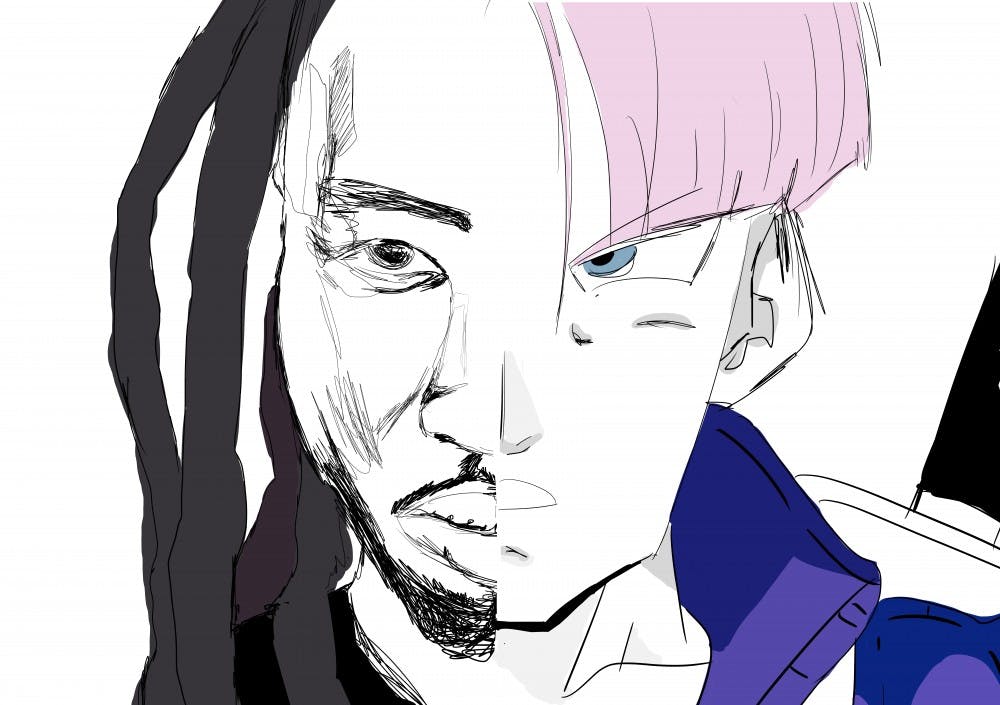During the 1970s, in New York City, the cradle of hip hop, movie theatres were playing Kung Fu flicks and porn. Theatres had been experiencing a surge in prices from Hollywood so they went ahead and bought raunchy material and Chinese films for a fraction of the price, and played them on repeat from dusk till dawn. This artform made its way into the subculture that gave birth to hip hop, and in the 1990s, with the emergence of Toonami on Cartoon Network, a similar international artistic infiltration took a hold of the people at the forefront of today’s rap scene.
In an interview on “The Nod,” a Gimlet podcast hosted by Brittany Luse and Eric Eddings that “tells the stories of Black life that don’t get told anywhere else,” RZA, founding member of the Wu–Tang Clan, explains the impact Kung Fu films had on him and his career as a musician. He talks about watching The 36th Chamber of Shaolin as a kid, and realizing that it was “a story of young people being oppressed by the government, trying to find their voice.” He’d grown up with an aversion towards school, where all the underdog stories he learned were set in western history, and always seemed to feature white people as main characters. Kung Fu movies were the only place where he could see fellow people of color as the leads in their own stories, and find ways to grow and challenge the powers that be. While he skipped class, he was learning about “self-discipline, loyalty and how to fight back—with style.”
This fixation with Kung Fu and the idea that, through rigorous training and tedious practice, one could grow in skill and power, took a hold of hip hop and never let go. We can still see traces of the influence of this genre on artists like Kendrick Lamar, who now goes by the nickname of Kung Fu Kenny, and SZA, whose mononym was actually inspired by those of Wu–Tang Clan members RZA and GZA. However, the association between hip hop and the martial arts grew in scope throughout the years following the creation of the Wu. Hip hop references gradually expanded to encapsulate Karate, Sumo wrestling, Samurai swordfighting and even the WWE, as seen on Offset & Metro Boomin’s Ric Flair Drip. In part, this was because most of these martial arts (although admittedly, not the WWE) display elements of the same values and principles that the RZA interpreted in those old–timey Bruce Li films—discipline, honor and strength. During this time, many of these martial arts began to play an important role in Japanese animated films.
Nujabes, arguably the greatest Japanese hip hop producer of all time, was a key player in the formation of the symbiotic relationship between the African American and Japanese cultures of the 1990s. He frequently collaborated with American artists such as CL Smooth and was one of the most prolific contributors to the soundtrack of Samurai Champloo, an anime series that astutely combined a Feudalistic Japan setting with splashes of hip hop culture. The show managed to blend two seemingly incompatible worlds into one by accessing the repertoire of references to martial arts present in rap. And similarly, on the other side of the globe, western cartoons were merging anime styles and subject matter with cartoons that were focused around the hip hop lifestyle, as was the case with The Boondocks and Afro Samurai, whose soundtrack was composed by the RZA himself.
Now, artists like Denzel Curry draw on the parallels between their experiences as hip hop artists and Goku’s tale, “Let him get the senzu bean so he regenerate.” Childish Gambino claims “[he’s] Super Saiyan like Goku” and Big Sean allegedly “hit the booth and went Super Saiyan” as well. The Dragon Ball Z canon is a well from which many artists draw from. Frank Ocean, in his song Pink Matter, contrasts the sweetness of “cotton candy” with the power of DBZ villain “Majin Buu” to highlight this antithesis in feminine sexuality.
The influence of Anime on hip hop, however, goes well beyond just Dragon Ball Z and it permeates many aspects of modern hip hop culture. Aside from the innumerable lyrical references, we can see the visual flair of the medium influencing artists like Kanye West, who’s music video for his hit single Stronger is based almost entirely on Katushiro Otomo’s critically acclaimed Akira, and Pharrell Williams, who’s (somewhat concerning) It Girl video is rendered in that same characteristic style. The Japanese medium’s soundtracks and conversations are also sampled in hip-hop, mostly in the lo–fi beats variety, but also in some better known artists’ repertoires, as is the case in Das Racist’s Rapping 2 U.
Some of anime’s ideals seem to echo with the people who’ve been influenced by them. The cultural similarities work as a bridge between the two seemingly irreconcilable worlds. But, even more importantly, it was there. Just like Kung Fu was brought into New York while rap was being created, Anime was brought into America while hip hop’s newest generation was growing up. Toonami was there during their formative period, and, if their experience with these childhood classics was at all similar to mine, they spent hours on end watching them. Some nostalgia was bound to last.







